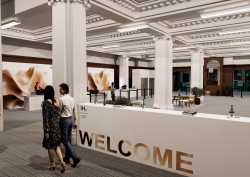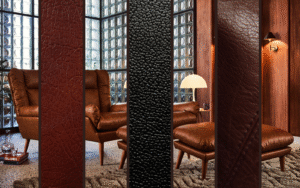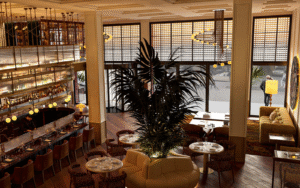Editor Hamish Kilburn spoke to Carl Almeida, Principal at p49 Deesign, to understand how he used local dance as his primary reference point when designing Renaissance Bali Nusa Dua Resort. Listen to the full episode of Travel By Design, a podcast by Marriott Bonvoy Traveler, in the article below…
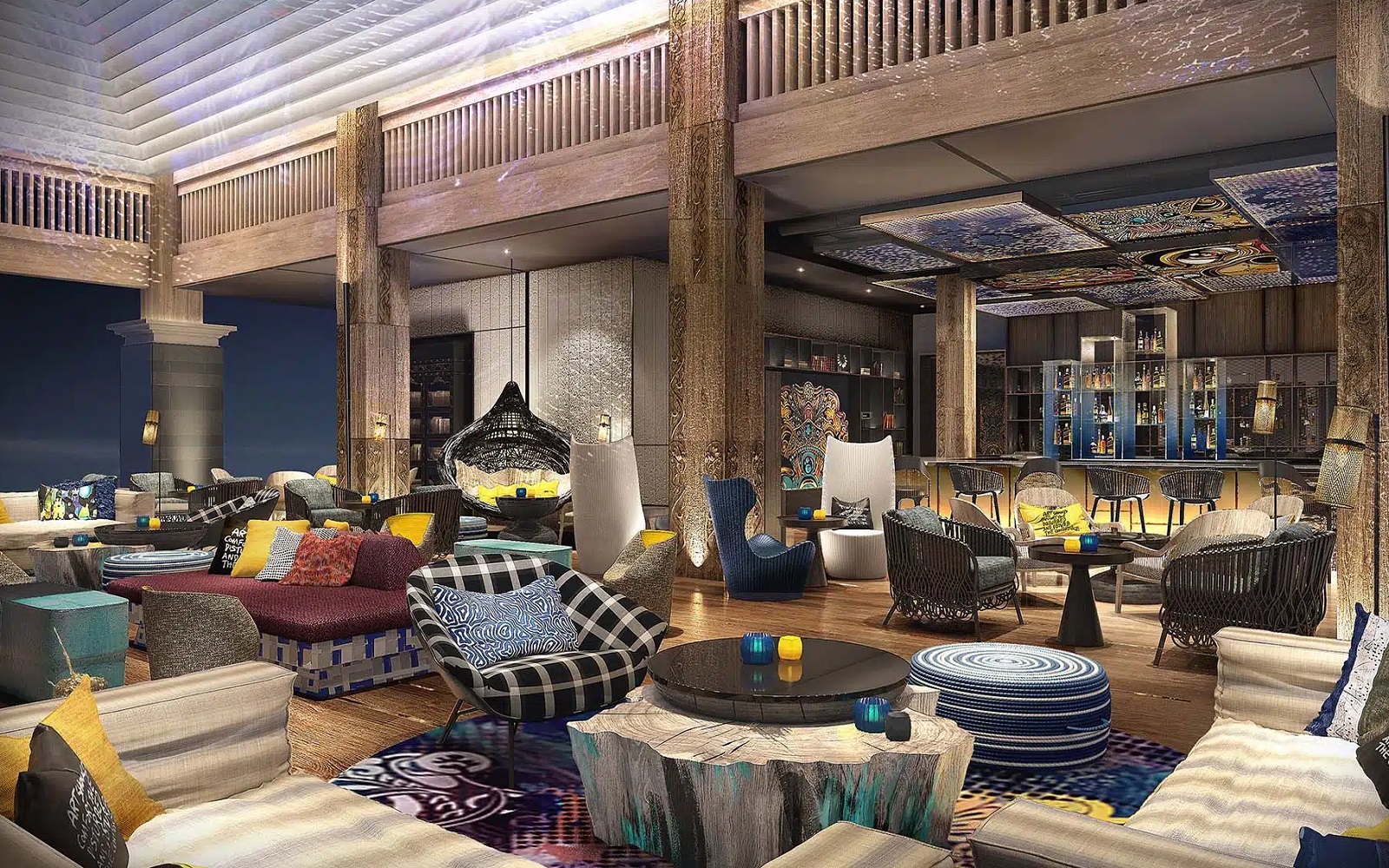
Renaissance Bali Nusa Dua Resort is unlike the typical, large beachside resorts that I’m used to visiting in Southeast Asia. Arriving at the resort is a pivotal part in the overall guest experience. That’s because to get there, guests head away from the coast, towards the hills, and travel through a small Balinese village before meeting immaculate, triangular roofs that emerge from an idyllic walled garden.
The hotel, designed by interior designer Carl Almeida, Principal of P49 Deesign, is, in many ways, an exhale for modern travellers, and here’s why. Listen below to the full 15-minute episode of the podcast, featuring the resort and Editor Hamish Kilburn’s interview with Almeida.
The design of the resort, which rests secluded in nature, is a nod to Balinese architecture and culture. “I want to give them [guests] a more cultural experience,” the designer explained.
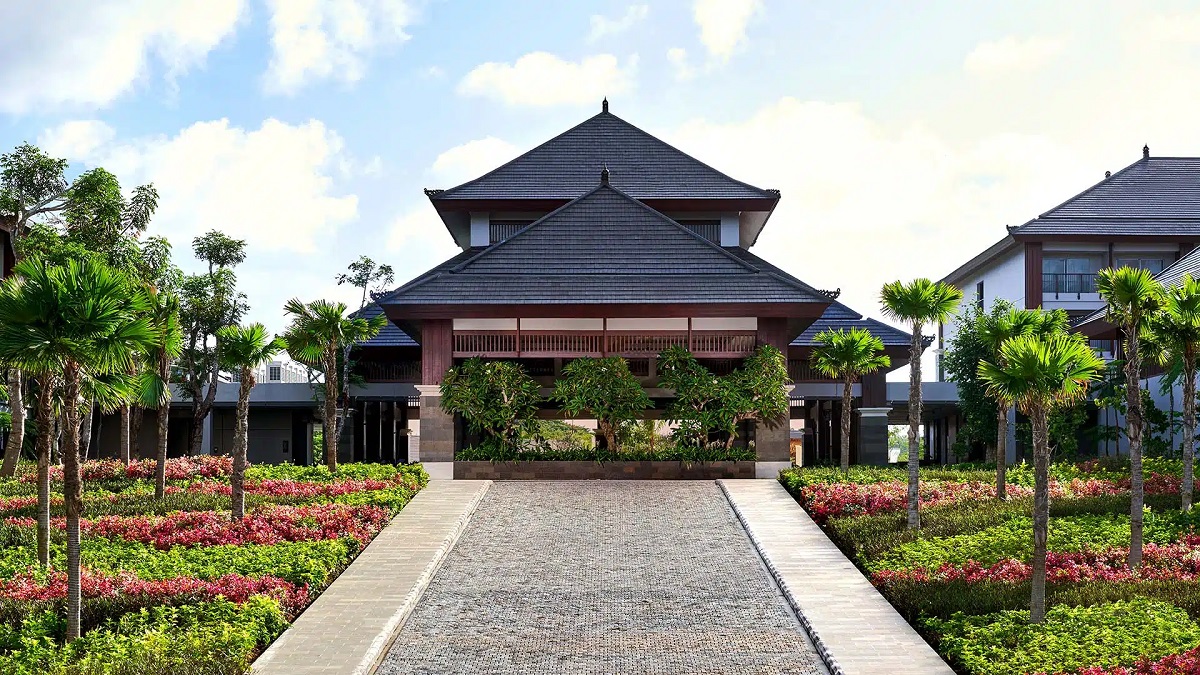
Image credit: Marriott International
The architecture itself is set into the hills, reminiscent of a villa, with traditional pitched roofs perched around a courtyard of peaceful walking paths and walled gardens. The space feels naturally calming. “A lot of the materials used in Balinese design are this charcoal lava stone,” Almeida explained. “So the architecture of all these buildings uses a charcoal stone as a reference to the traditional stone used in the temples.”
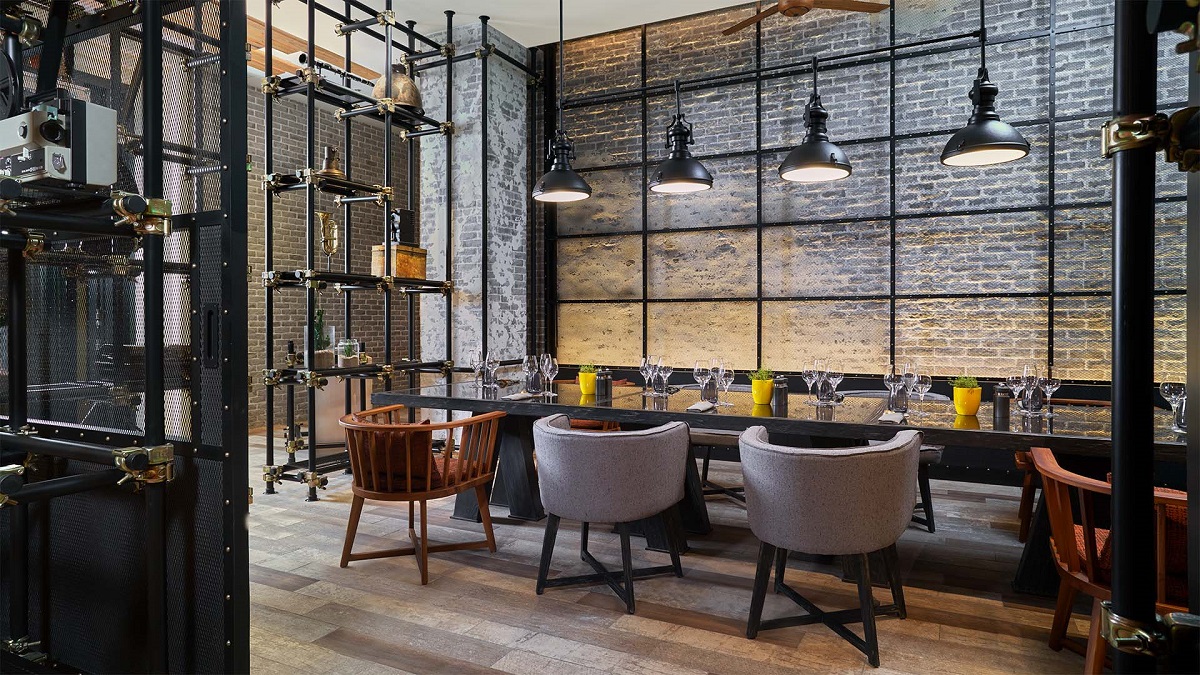
Image credit: Marriott International
Meanwhile, the interiors have been inspired by Almeida’s deep appreciation for Balinese theatre and dance, which he’s cultivated by visiting the island over the course of 18 years. As guests walk through each space, the design scheme subtly evolves, reflecting different aspects of Balinese dance. In the lobby, for example, Almeida was inspired by a dance called the Pendet. “It’s a welcoming dance, and at the end of the dance, they actually throw flower petals over the guests to welcome you,” he said. “But we’ve interpreted that in how we use lighting effects. So we can shine lights and then they kind of flicker on the walls, off the ceiling, and that creates the effect that it’s, it feels like petals falling down, so it was really a way of interpreting the movement of dance in a very contemporary way; nothing’s literal in this project. But it’s symbolic.”

Image credit: Marriott International
Another dance, explored in the R Bar through materials and clever lighting, is the principle of the Barong dance, which is a performance between good versus evil, which allowed the designer to explore juxtaposing design elements to create meaningful layers and energy. “Where we’ve got traditional carvings on one side, if you look at the ceiling, it turns itself into metal panels, which has still got the carvings of the headgear that the Balinese dancers use,” he said. “But then we’ve interlinked that with LED screens. So you get this total contradiction of modern material and modern kind of presentation within the LED.”
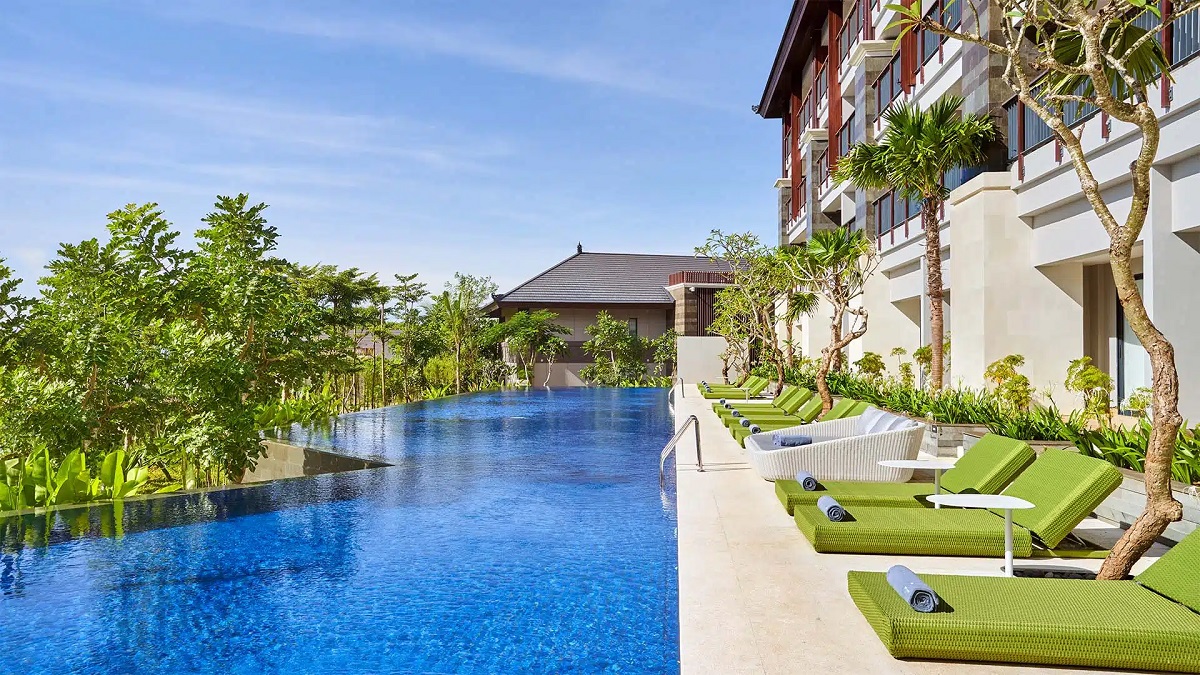
Image credit: Marriott International
> Since you’re here, why not explore another podcast episode from Hamish Kilburn and Travel By Design?
Travel By Design is a podcast, hosted by Editor Hamish Kilburn and brought to you by Marriott Bonvoy Traveler. Search ‘Travel By Design’ wherever you get your podcasts. New episodes, which feature incredible design stories from all corners of the world, drop bi-monthly.
Main image credit: Marriott International







